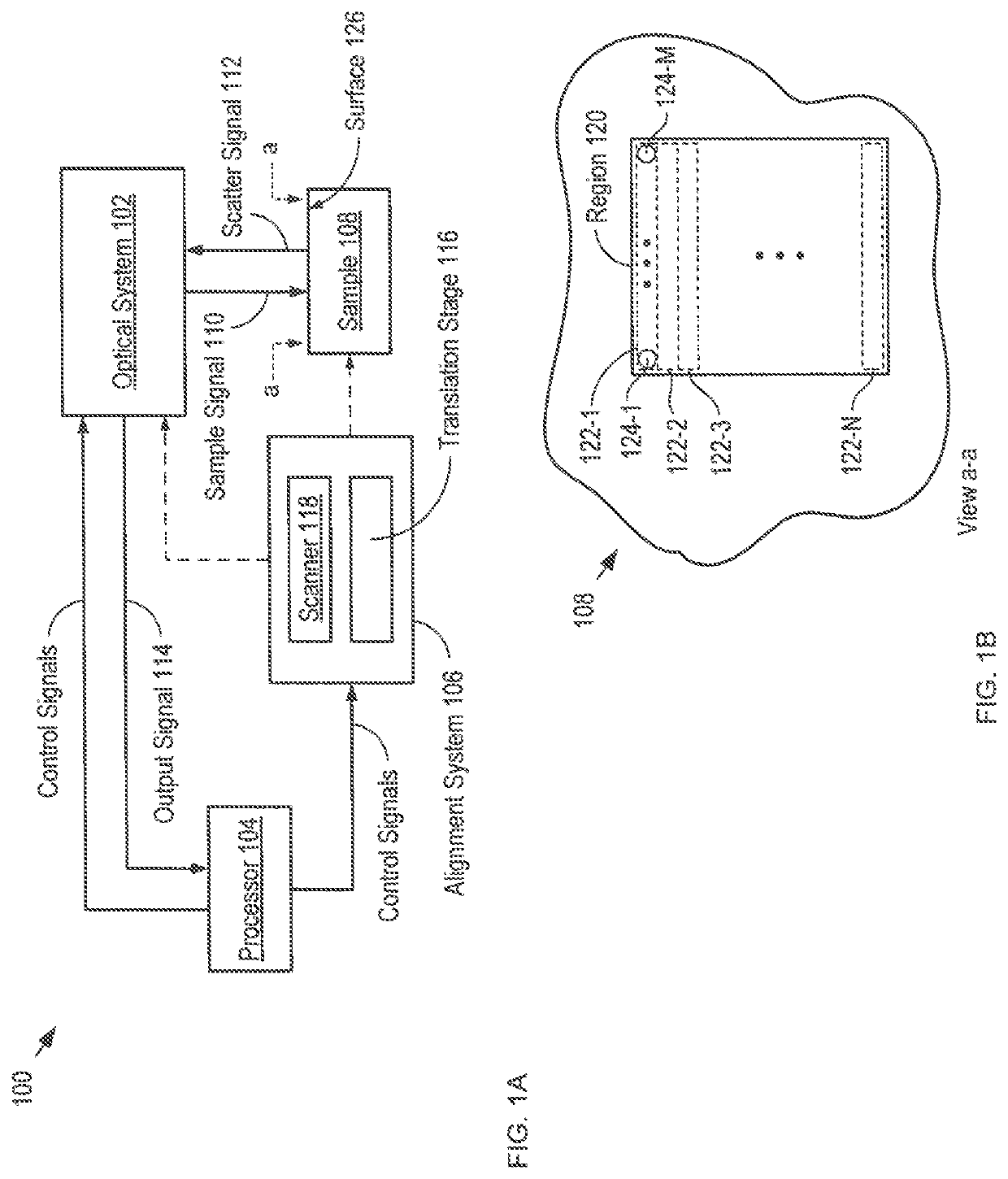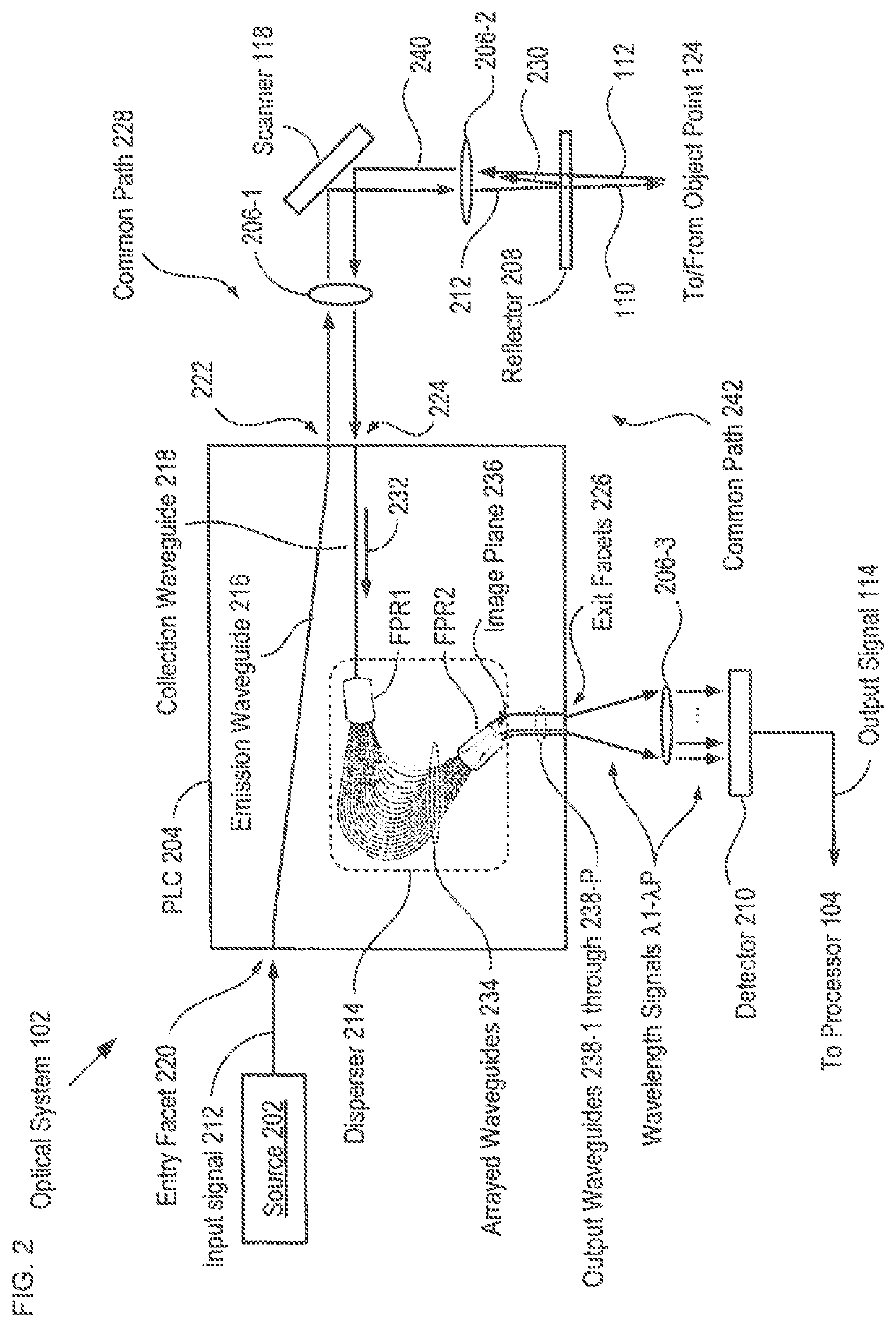Common-path integrated low coherence interferometry system and method therefor
a low-coherence interferometry and common-path technology, applied in the field of subsurface imaging, can solve the problems of increased cancer risk, poor image resolution, x-ray imaging, etc., and achieve the effect of improving performan
- Summary
- Abstract
- Description
- Claims
- Application Information
AI Technical Summary
Benefits of technology
Problems solved by technology
Method used
Image
Examples
Embodiment Construction
[0044]FIG. 1A depicts a schematic drawing of an imaging system in accordance with an illustrative embodiment of the present invention. System 100 is a low-coherence interferometry system comprising optical system 102, processor 104, and alignment system 106. System 100 is an OCT system that is operative for generating a three-dimensional image of the structure of a sample region.
[0045]It should be noted that low coherence interferometry (LCI) encompasses several types of imaging approaches, including optical coherence tomography (OCT), optical coherence reflectometry, partial coherence reflectometry, optical frequency domain imaging, and the like, all of which have substantially the same basic measurement set-up that includes an interferometer operated under low-coherence illumination. LCI systems have been researched and applied to different fields, including medical imaging, measuring electric or magnetic field, pressure, acceleration, fluid flow, etc., with OCT systems being the ...
PUM
 Login to View More
Login to View More Abstract
Description
Claims
Application Information
 Login to View More
Login to View More - R&D
- Intellectual Property
- Life Sciences
- Materials
- Tech Scout
- Unparalleled Data Quality
- Higher Quality Content
- 60% Fewer Hallucinations
Browse by: Latest US Patents, China's latest patents, Technical Efficacy Thesaurus, Application Domain, Technology Topic, Popular Technical Reports.
© 2025 PatSnap. All rights reserved.Legal|Privacy policy|Modern Slavery Act Transparency Statement|Sitemap|About US| Contact US: help@patsnap.com



